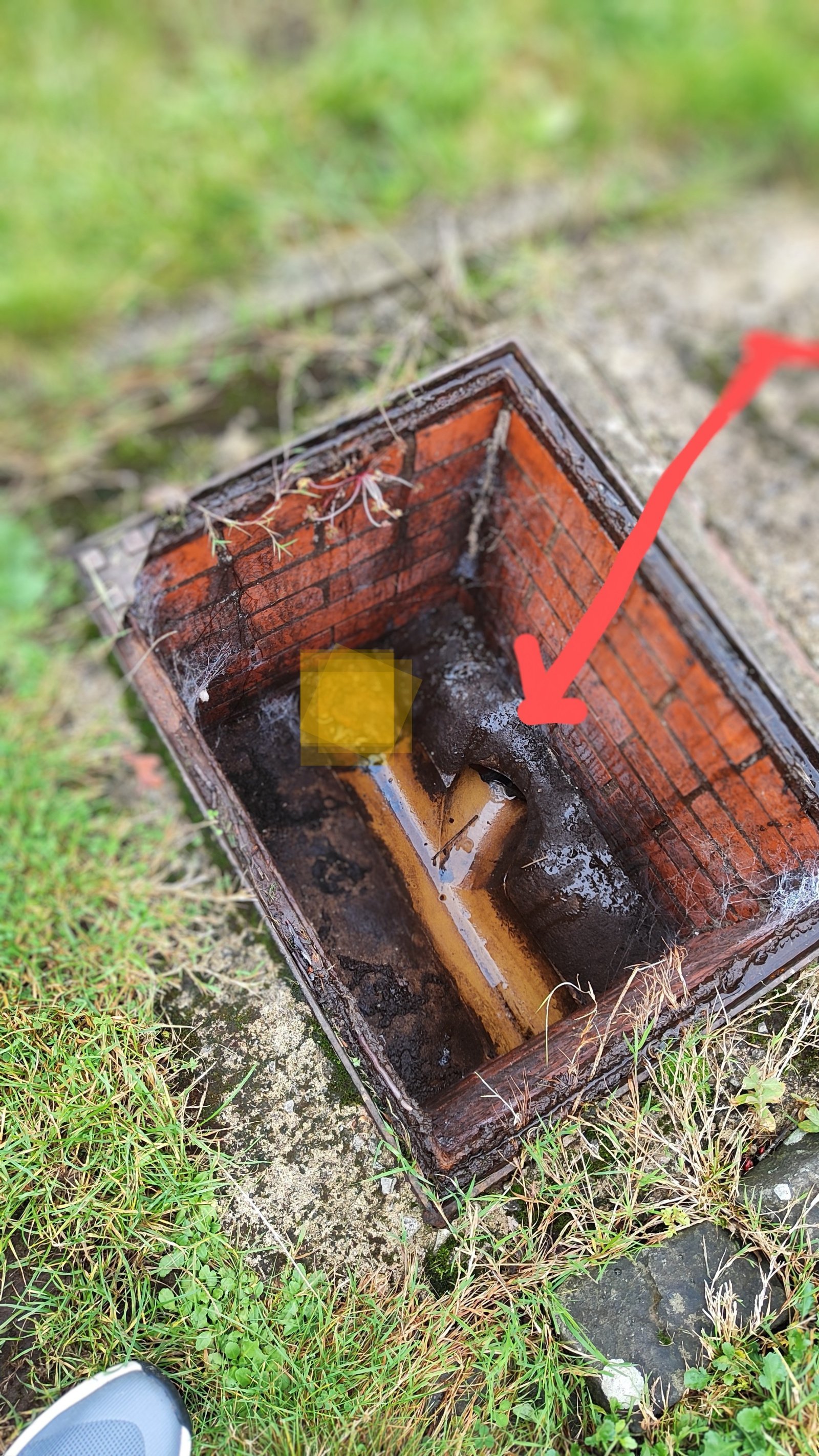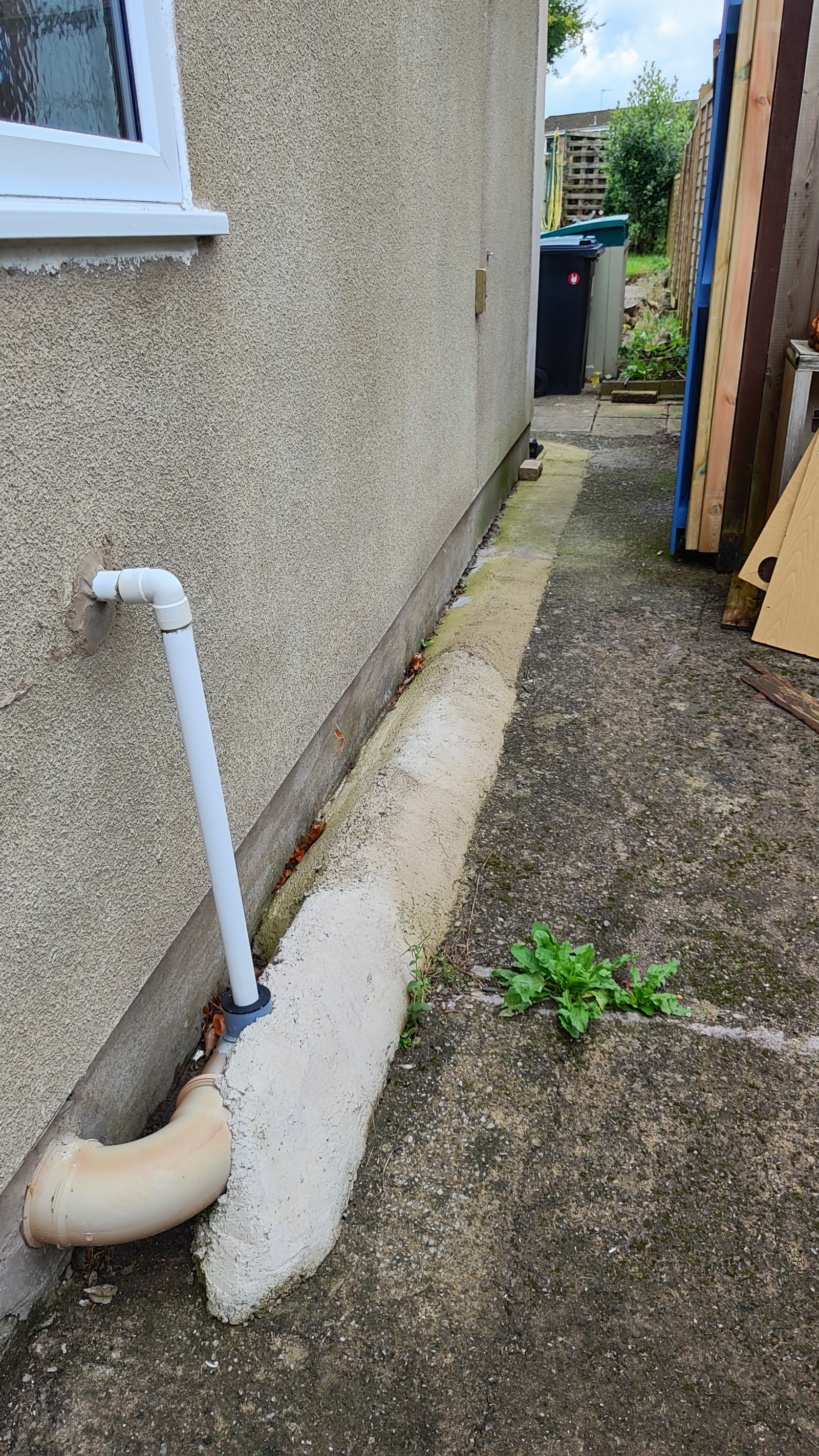We’d like to remind Forumites to please avoid political debate on the Forum.
This is to keep it a safe and useful space for MoneySaving discussions. Threads that are – or become – political in nature may be removed in line with the Forum’s rules. Thank you for your understanding.
The MSE Forum Team would like to wish you all a Merry Christmas. However, we know this time of year can be difficult for some. If you're struggling during the festive period, here's a list of organisations that might be able to help
📨 Have you signed up to the Forum's new Email Digest yet? Get a selection of trending threads sent straight to your inbox daily, weekly or monthly!
Has MSE helped you to save or reclaim money this year? Share your 2025 MoneySaving success stories!
Advice on outside drainage
Comments
-
If you can't get the levels you need, a last resort could be a small domestic pumping station. They get used for problems like the drainage in a converted basement.1
-
1
-
Do you have a long stick and a spirit level available to you? Or even one of these wee clip-on-to-string type levels?RoughNeck said:
1 -
Kiran said:...
That being said, the initial flush be it 4.5, 6 or 9L will unlikely be experiencing open chanel conditions because that volume of water will fill the pipe. It is at this point that the air benefits the drainage by equalising the pressure and not creating a vacuum effect. Once the initial flush is over and the water flows away, I agree it should be operating under open channel conditions.
Anyway, OP I apologise for adding a post that isn't relevant to you question. Good luck getting a new drainage line in and hope your problem is sortedMaybe in the trap and/or pan connector, but where the flow is in the underground drain/sewer the flow should be well below pipe-full capacity. This is why the building regs impose minimum pipe diameters - there are limited cases where a 75mm stack can be used, which in part is governed by the diameter of the toilet outlet.The capacity of a 100mm drain at (say) 1:60 should be more than 7 litres/sec at a proportional depth of 0.75. The length of time it takes for the flush to complete varies according to the cistern type, but if (for the sake of discussion) we assumed a 9 litre cistern fully discharging in 2 seconds then the average flow rate would be 4.5 litres per second. In other words it would take several toilets with super-fast flushes all being flushed simultaneously to exceed the pipe-full capacity of a 100mm drain laid at 1:60 - the drain will operate in open channel conditions if only one toilet is connected to it (and assuming no downstream restriction).The need for ventilation (or other equalisation of air pressure) is to protect the traps, not to encourage flow in the downstream pipe - hence the complex rules in the building regs about stack/branch pipe sizes, falls, maximum runs and need for ventilation/AAV.In the OP's case (and I think this discussion is relevant to their situation) the setup appears to be (or needs to be converted to) a sub-stack arrangement and since alterations to the drain will need signoff from BC, it is likely the BCO will want to make sure the toilet and basin are connected to the drain in accordance with the regs.The relevant paragraph from document H1 is 1.30, which states "A stub stack may be used if it connects into a ventilated discharge stack or into a ventilated drain not subject to surcharging and no connected water closet has a floor level more than...". The significance of "not subject to surcharging" is as I said in an earlier post - so long as there isn't surcharging (i.e. that open channel conditions exist) then air can flow in the space above the water level (in whichever direction is necessary) in order to achieve the pressure equalisation requirement. If the drain does surcharge then greater care needs to be taken with the ventilation/pressure equalisation and conversion to a fully ventilated stack arrangement may be necessary.
The TL;DR for the OP is that if building control get involved it is likely they will insist on ventillation being added close to where the toilet connects to the drain, but for trap protection rather than any effect it might have on the risk of blockages.
0 -
It's funny actually. I had building control round today to provide retrospective regularisation for some windows we had installed by someone without a FENSA cert. All good with the windows. However, one of the windows was installed during the cloakroom installation from a couple years ago. Apparently I should have notified them I was doing the cloakroom (I had no idea). They commented that whilst they wouldn't pursue legal action, the drainage needs looking at (!), as well as looking into installing an AAV at the back of the toilet/waste pipe? I'll look into doing the AAV separately. The drainage though, I feel it's going to be a conundrum. They agreed that the shallow drains are a problem.0
-
That could be one option, another might be a macerator.RoughNeck said:
When you say pumping station, what do you mean? Like a sump kind of thing?stuart45 said:If you can't get the levels you need, a last resort could be a small domestic pumping station. They get used for problems like the drainage in a converted basement.Personally I would also explore whether there is a foul sewer at the front of the house that you could make a new connection to. Shared sewers tend to be at the rear of properties because that is where the kitchen/bathroom is typically located. The pipe in your back garden probably collects from the back of a row of houses (including yours) before doing a 90 degree turn and running out to the main sewer in the street.If you don't have the fall on the pipe going from front to the chamber at the back then you may be able to go from the front to the shared sewer at the front (if it is there) or to the main in the street. A new connection won't necessarily be cheap, but it may be less hassle in terms of the amount of digging and disruption. You also won't have the maintenance/running costs of a pumping station or macerator.1 -
Something like this. Clearwater 200 Litre Sewage Pumping Station - Tanks Direct (tanks-direct.co.uk)RoughNeck said:
When you say pumping station, what do you mean? Like a sump kind of thing?stuart45 said:If you can't get the levels you need, a last resort could be a small domestic pumping station. They get used for problems like the drainage in a converted basement.
It's just one option if you can't get the levels you need.1 -
Thanks for the link. I'll raise that as a possibility.stuart45 said:
Something like this. Clearwater 200 Litre Sewage Pumping Station - Tanks Direct (tanks-direct.co.uk)RoughNeck said:
When you say pumping station, what do you mean? Like a sump kind of thing?stuart45 said:If you can't get the levels you need, a last resort could be a small domestic pumping station. They get used for problems like the drainage in a converted basement.
It's just one option if you can't get the levels you need.0 -
The landscaper who we've initially got planned to do the patio I'm not sure is overly keen on handling the waste works, is that normal? Maybe he was talking more about a macerator, as that discussion did come up. He suggested a plumber, so maybe that's what made it sound like he didn't want to touch it.
I did ask a plumber around using a macerator and he didn't think it was a worthwhile option and would probably be more hassle than it's worth. If it was just handling water waste, then it could work. But if it's handling solids, shall we say, then it might struggle. He also said that if we did have one and it went wrong, finding someone to repair it would be difficult as it's such a messy job.
I'll check the street for drainage. I have a funny feeling there isn't anything though. A house was built 20 yards up and I'm sure he had to plumb into the drain on the main road which our street connects to. I don't think they even allowed him to connect to the rear sewers, but I'm not 100% on this.
I just need someone with a laser device to give me some accurate measurements and see what's possible. We've contacted the landscaper about it anyway.0
Confirm your email address to Create Threads and Reply

Categories
- All Categories
- 352.9K Banking & Borrowing
- 253.9K Reduce Debt & Boost Income
- 454.7K Spending & Discounts
- 246K Work, Benefits & Business
- 602.1K Mortgages, Homes & Bills
- 177.8K Life & Family
- 259.9K Travel & Transport
- 1.5M Hobbies & Leisure
- 16K Discuss & Feedback
- 37.7K Read-Only Boards



